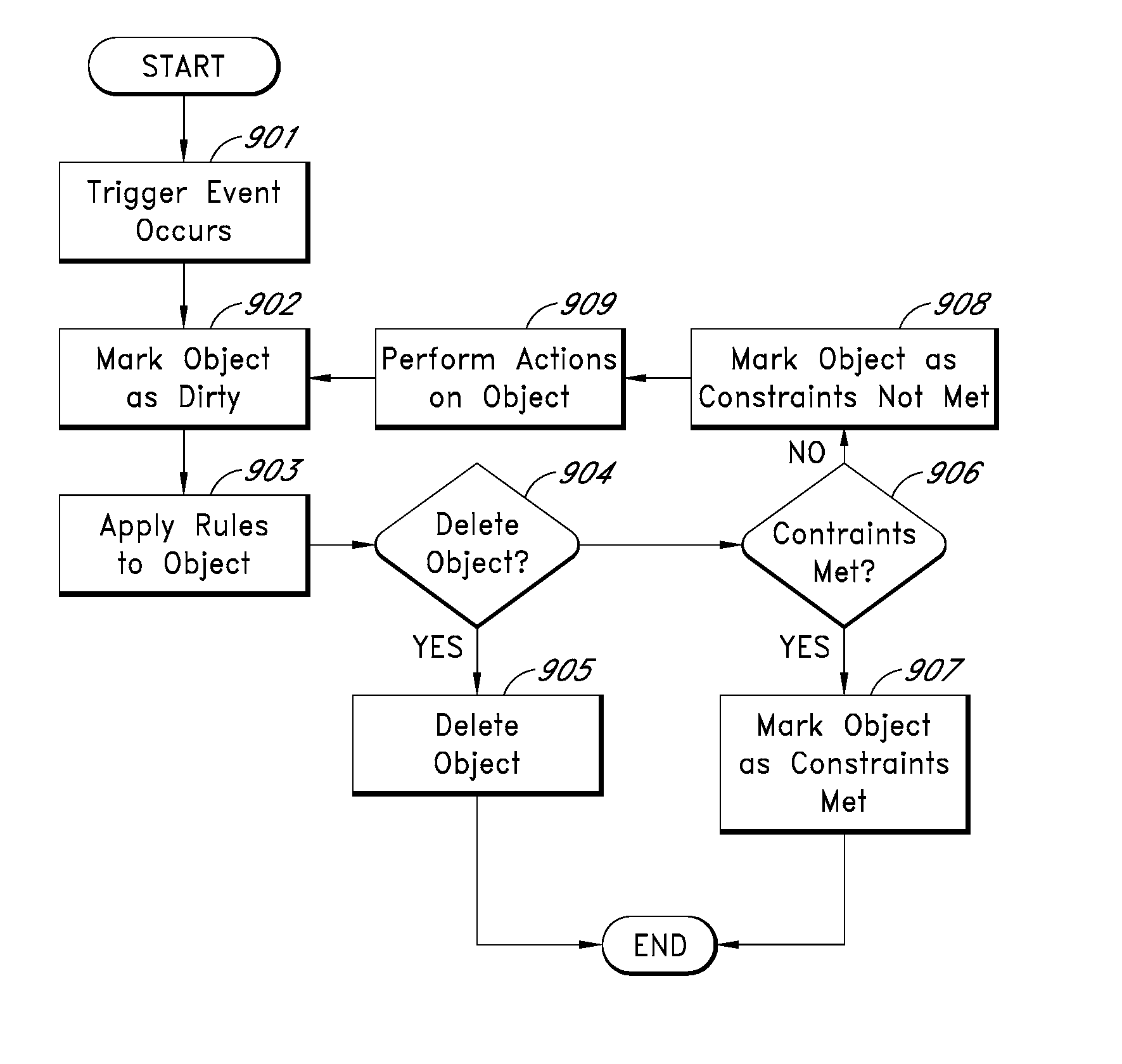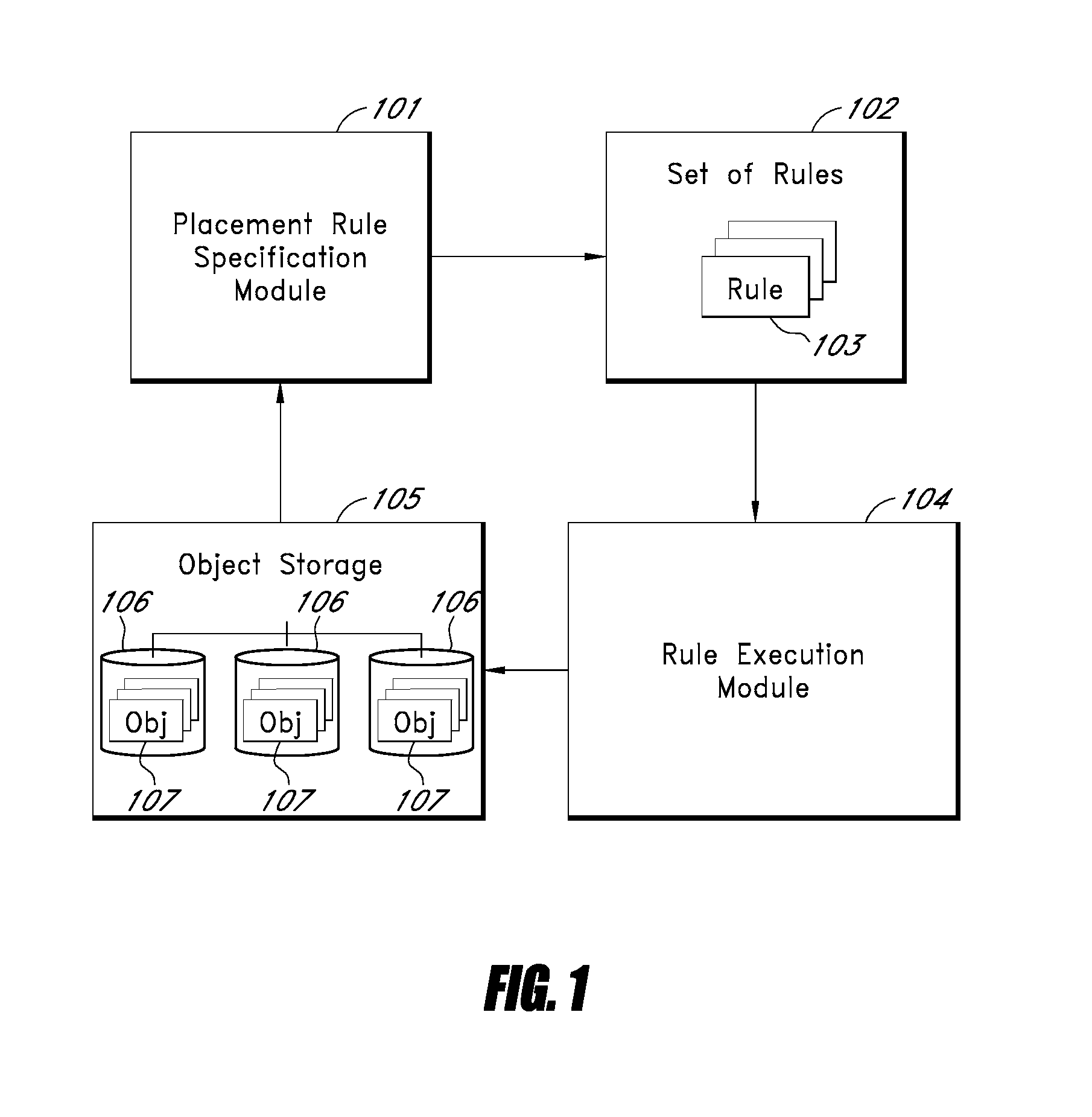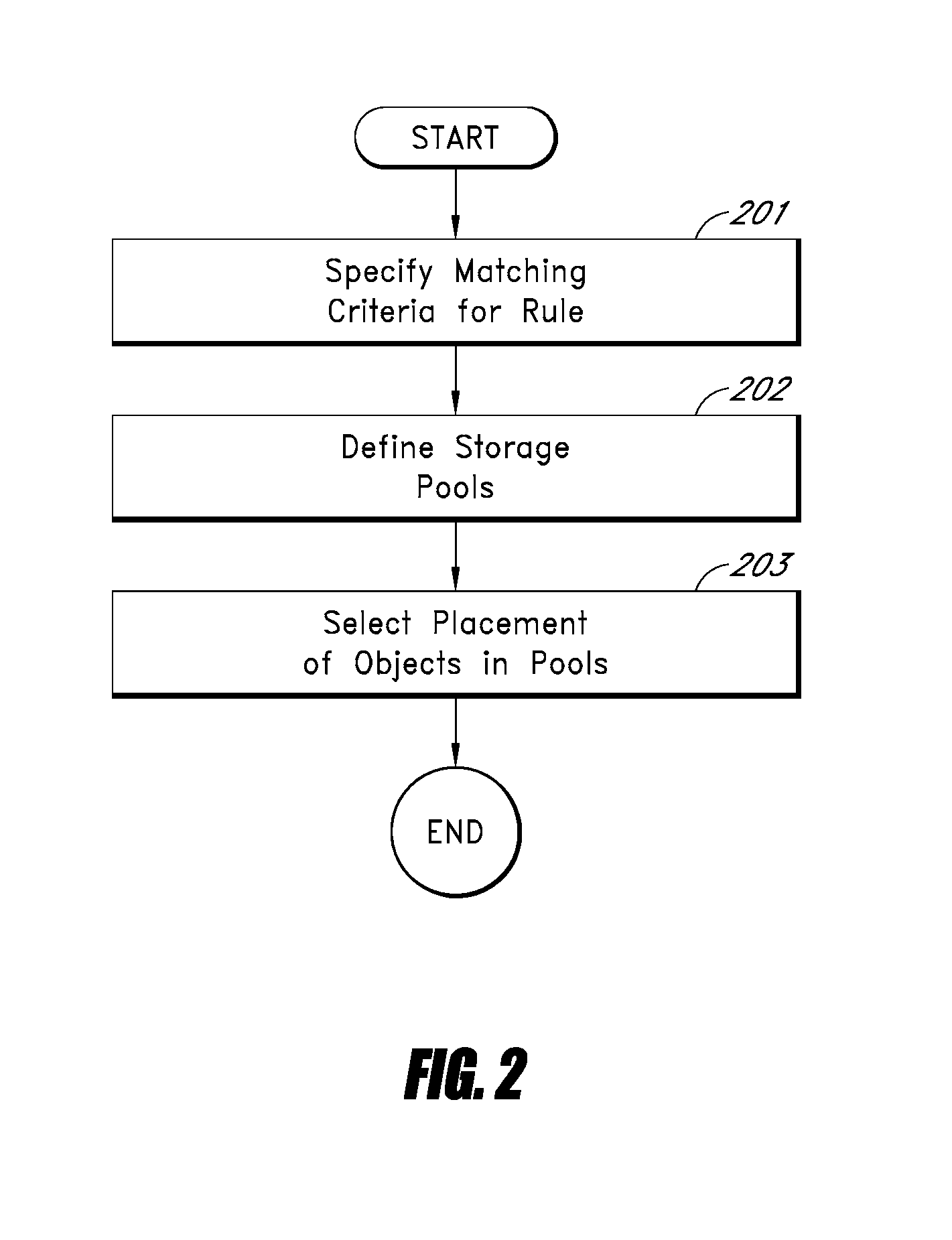Modifying information lifecycle management rules in a distributed system
a distributed system and information lifecycle management technology, applied in the field of storage management, can solve the problems of time-consuming, error-prone, and difficult task of manually managing the placement of objects over tim
- Summary
- Abstract
- Description
- Claims
- Application Information
AI Technical Summary
Benefits of technology
Problems solved by technology
Method used
Image
Examples
Embodiment Construction
[0019]Disclosed herein is a storage grid system that provides storage services to external applications. Applications package data that is to be stored into discrete objects, which are submitted to the grid along with associated metadata as part of an initial storage process. This initial storage process is known as “ingest.” Objects may be ingested by clients of the system.
[0020]In some embodiments, objects can be ingested into the grid directly by clients via an HTTP API, or indirectly via a “Gateway.” Examples of gateways are the File System Gateway, which provides standard CIFS / NFS access for clients, and the DICOM Gateway, which provides DICOM protocol access for clients.
[0021]According to some embodiments of the present invention, once an object has been ingested, the storage grid system provides the management of the object over time. Management may involve ensuring that the object is reliably stored for the required duration, is protected against failures, and / or has the Qua...
PUM
 Login to View More
Login to View More Abstract
Description
Claims
Application Information
 Login to View More
Login to View More - R&D
- Intellectual Property
- Life Sciences
- Materials
- Tech Scout
- Unparalleled Data Quality
- Higher Quality Content
- 60% Fewer Hallucinations
Browse by: Latest US Patents, China's latest patents, Technical Efficacy Thesaurus, Application Domain, Technology Topic, Popular Technical Reports.
© 2025 PatSnap. All rights reserved.Legal|Privacy policy|Modern Slavery Act Transparency Statement|Sitemap|About US| Contact US: help@patsnap.com



